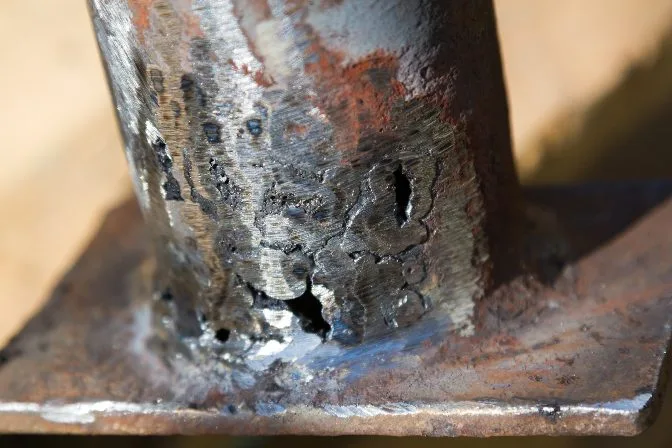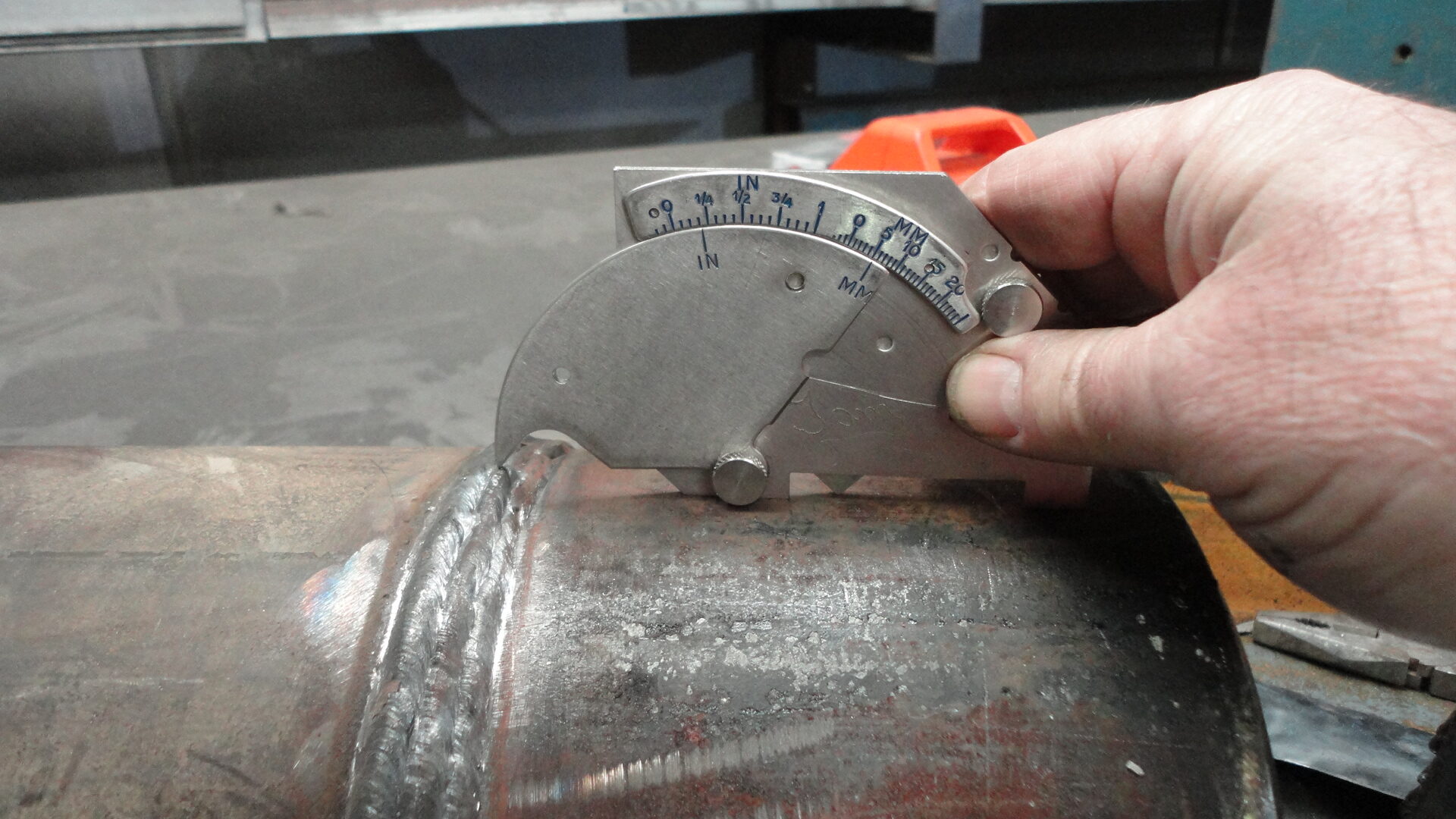How to Prepare for a Welding Inspection Milwaukee Professionals Recommend
How to Prepare for a Welding Inspection Milwaukee Professionals Recommend
Blog Article

Checking Out the Different Techniques and Standards of Welding Evaluation for Achieving Conformity and Reliability in Engineering Applications
The significance of welding inspection in engineering applications can not be overemphasized, as it offers as a vital secure for making sure structural stability and compliance with sector requirements. Numerous approaches, consisting of aesthetic inspection and progressed non-destructive testing strategies, give vital insights into the quality of welds.
Importance of Welding Examination
Welding inspection plays an essential function in guaranteeing the stability and safety and security of welded frameworks. The relevance of welding assessment can not be overstated, as it offers as a guard against possible failures that might result from inadequate welding practices.
In addition, welding examination is essential for maintaining quality control throughout the welding procedure. It makes sure that the welds meet the needed mechanical and physical properties required for their designated applications. Routine inspections additionally foster a society of accountability and constant renovation within welding procedures, urging adherence to finest methods and market standards.
In controlled industries such as manufacturing, aerospace, and building, rigorous welding evaluation protocols are mandated to adhere to lawful and security demands. Ultimately, reliable welding assessment not just safeguards human life and residential or commercial property yet likewise enhances the durability and integrity of bonded frameworks, making it a crucial facet of engineering and building and construction.

Usual Welding Inspection Approaches
A selection of inspection approaches are used to assess the top quality and integrity of welds, each tailored to spot certain types of flaws. Among one of the most usual approaches is visual evaluation, which includes a complete exam of the weld surface area to recognize visible flaws such as splits, damages, and insufficient combination. This method is often the very first step in the examination process as a result of its simpleness and cost-effectiveness.
One more commonly utilized approach is radiographic examination, where X-rays or gamma rays penetrate the weld to expose inner flaws. This strategy is specifically reliable for spotting porosity and additions within the weld material. Similarly, ultrasonic screening utilizes high-frequency acoustic waves to recognize interior flaws, offering a thorough evaluation of the weld's stability.
Furthermore, magnetic particle assessment is utilized for ferromagnetic products, permitting the detection of surface area and near-surface defects by using magnetic areas and observing bit patterns. Last but not least, color penetrant testing involves applying a fluid dye to the weld surface area, disclosing cracks and various other suspensions upon examination. Each of these methods plays an essential function in ensuring weld high quality and conformity with industry requirements
Non-Destructive Testing Methods
Non-destructive screening (NDT) methods are important tools in the evaluation of weld high quality, allowing inspectors to review the honesty of bonded joints without triggering damage to the products. Different NDT techniques are used to identify potential issues, making sure that welds fulfill the needed criteria for safety and performance.
Among the most common methods is ultrasonic screening (UT), which utilizes high-frequency sound waves to identify inner defects such as cracks or voids. Radiographic testing (RT) uses X-rays or gamma rays to generate pictures of welds, disclosing any kind of stoppages within the product. Magnetic particle testing (MT) works for discovering surface and near-surface defects in ferromagnetic materials via the application of electromagnetic fields and contrasting fragments.
Fluid penetrant screening (PT) is an additional widely used approach that includes applying a dye to the surface area of the weld, which seeps into any splits, making them noticeable under ultraviolet light. Each of these approaches gives special advantages and constraints, and the option of an appropriate technique is vital to attaining precise evaluations of weld integrity. Ultimately, the execution of NDT techniques considerably adds to the integrity and safety and security of engineering applications.

Governing Specifications and Compliance
In the realm of welding assessment, adherence to regulative requirements and compliance is critical to make sure the safety and integrity of welded hop over to these guys frameworks (Welding Inspection Milwaukee). Numerous organizations, including the American Welding Culture (AWS), the American Culture of Mechanical Designers (ASME), and the International Company for Standardization (ISO), have developed standards that control welding practices and inspection treatments. These criteria give a structure for quality control, laying out the required certifications for examiners and the methodologies for analyzing weld integrity
Compliance with these governing criteria not only boosts the structural integrity of bonded settings up however also minimizes dangers related to failures, which can have disastrous repercussions. Examinations should be executed utilizing defined treatments, consisting of visual, ultrasonic, and radiographic approaches, to ensure that welds satisfy defined criteria.
In addition, adherence to these requirements is typically required by regulation, particularly in markets such as aerospace, construction, and production. Regular audits and certifications are vital to preserve compliance, therefore promoting a culture of safety and top quality within organizations. Ultimately, regulative requirements and compliance function as the backbone of trustworthy welding evaluation practices, making sure that crafted frameworks satisfy both efficiency assumptions and security demands.
Finest Practices for Welding Assessment
While keeping compliance with regulative requirements is essential, executing best techniques for welding evaluation even more improves the security and integrity of bonded structures. Efficient welding evaluation starts with detailed preparation, which includes recognizing the certain demands of each task and making sure assessors are well-trained in relevant methods and standards.
Utilizing a detailed assessment list aids to guarantee all critical facets are assessed, such as weld size, infiltration, and visual issues. Non-destructive testing (NDT) techniques, such as ultrasonic or radiographic testing, should be used where appropriate, giving an extra in-depth assessment of weld quality without compromising the stability of the materials.
Documentation plays a significant function in finest techniques; maintaining exact records of inspections, consisting of photographs, test results, and conformity reports, makes certain responsibility and facilitates future analyses. Additionally, cultivating a society of open communication in between examiners and welders can bring about very early recognition of prospective issues, advertising prompt restorative actions.
Verdict
In summary, the execution of strenuous welding examination techniques and adherence to developed requirements are essential for guaranteeing conformity and reliability in design applications - Welding Inspection Milwaukee. Methods such as aesthetic my review here evaluation, radiographic testing, and ultrasonic testing serve as crucial devices in preserving and identifying flaws top quality guarantee. By fostering a society of accountability and excellence, companies can boost the integrity and durability of welded frameworks, eventually adding to the safety and efficacy of engineering tasks
Various methods, consisting of aesthetic assessment and progressed non-destructive testing techniques, provide vital insights into the top quality of welds.Welding examination plays an essential role in ensuring the stability and security of learn this here now bonded structures.A range of inspection approaches are utilized to assess the quality and honesty of welds, each customized to discover specific types of problems.One more extensively made use of method is radiographic examination, where X-rays or gamma rays penetrate the weld to disclose internal issues.In the world of welding evaluation, adherence to regulatory standards and conformity is critical to make certain the safety and reliability of welded frameworks.
Report this page